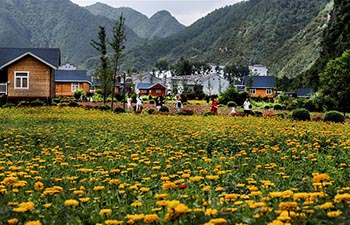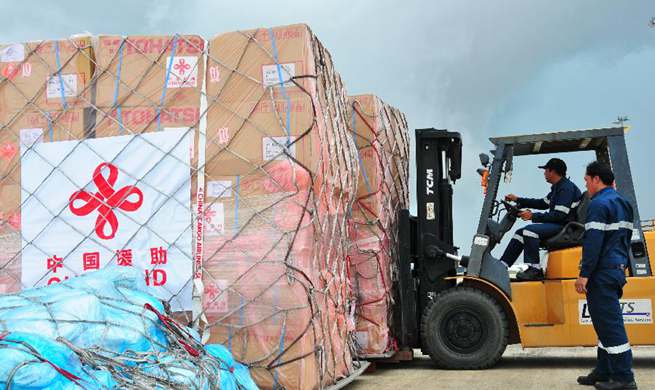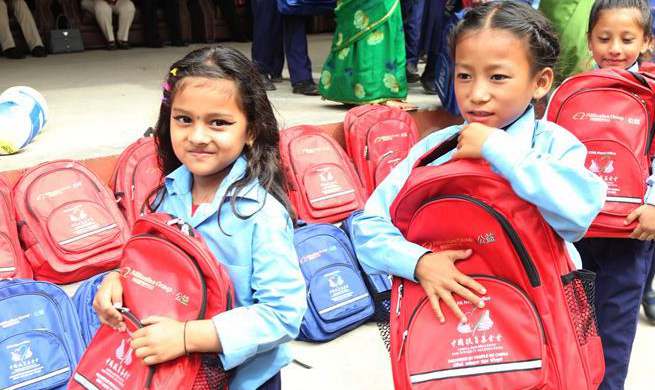LHASA, July 31 (Xinhua) -- Gyirong, a township in southwest China's Tibet Autonomous Region near the border with Nepal, has seen booming trade.
From January to June, about 75,332 tonnes of cargo cleared the port, up 32.8 percent year on year, said Liu Jian, deputy chief of the Gyirong port management committee.
The cargo value was 1.3 billion yuan (194 million U.S. dollars), up 11.83 percent year on year, he said. Since the port was opened to third country personnel on August 30 last year, trade and logistics have developed rapidly, he said.
Resident Lhapa lives in Maga village of Gyirong Township. His family survived mainly on growing barley and potatoes before trade took off in his hometown. "My son learned to drive a truck. He earns 50,000 yuan annually," said Lhapa. The family was taken off the list of impoverished people last year.
In Gyirong County, over 1,000 people are licensed to carry out trade. The county is transforming itself from an agricultural backwater to a booming trade hub, said Liu. Every day, 100 trucks line up to take garments, fruit and electronic appliances to Nepal and return to China with spices, handicrafts and medicine.
Chhetan Richuyo Gurung, from Nepal, has lived in Gyirong for 15 years. He sells specialities from Nepal, making 200,000 yuan (29,800 U.S. dollars) every year.
"It used to take porters two whole days to take commodities from Nepal to China. Now it only takes a few hours," he said.
"As far as I know, there are more than 50 Nepalese like me here. Life is good here," he said.
By the end of 2017, there were 26 trade companies and seven customs clearance agents in the Gyirong port. A 12,000 square-meter market is under construction in the town. When it is ready, it will supply 100 booths for traders.
Gyirong now carries out the functions of the former Zham port, which cleared about 90 percent of trade by land between China and Nepal before a massive earthquake devastated Nepal and some border areas in Tibet on April 25, 2015.
















